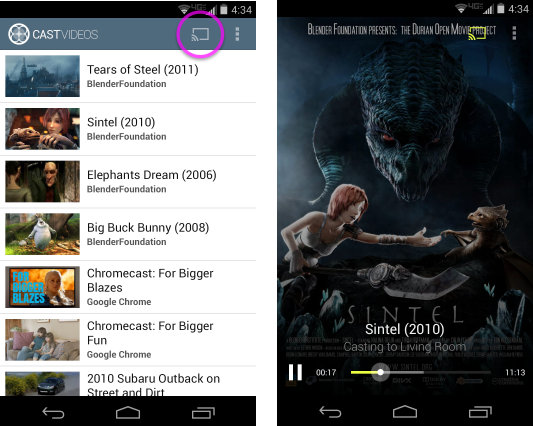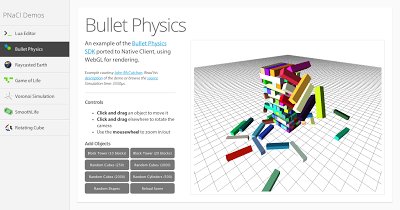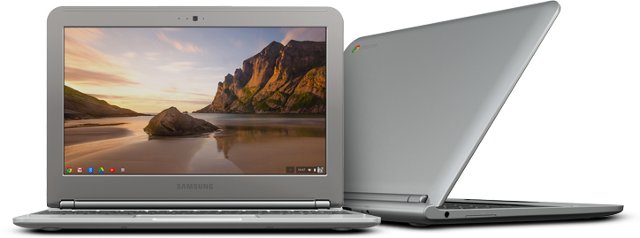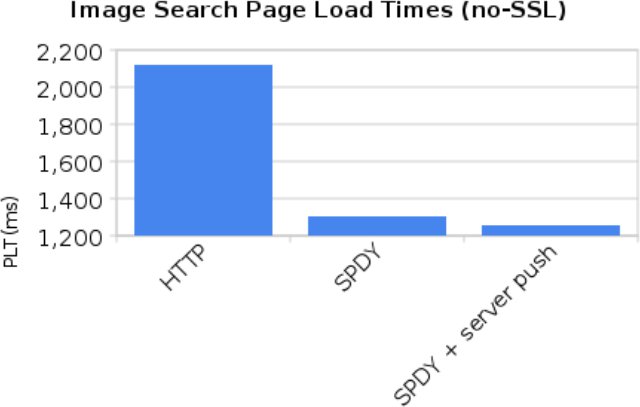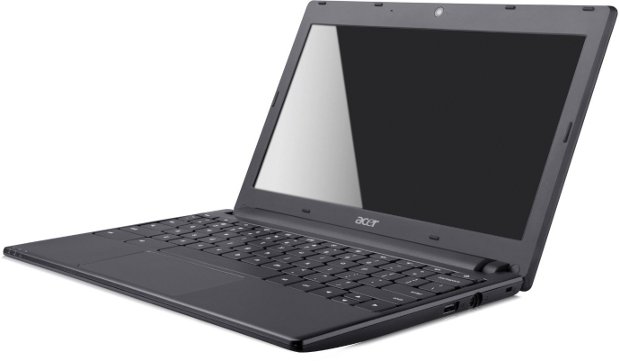Since it’s release in July 2013, Google Chromecast HDMI TV stick has been very popular thanks to its low cost, and despite of its lack of feature, it does what it ‘s supposed to do – multi-screen experience across mobile devices and large screen displays – reasonably well. A Google Cast API preview was released at launch time for both the receiver (Chromecast) and sender (Android, iOS or Chrome) but the license terms prevented developers to release apps without written permission by Google as the API could still evolve. This restriction has just been lifted, as Google has now officially released Google Cast SDK for Chromecast and other upcoming Google Cast devices. The Sender SDK is available for Android, iOS, and Chrome on the sender side, and the Receiver SDK allows you to run an app on the Chromecast. Google claims the Google Cast SDK is simple to integrate because […]
Google’s Portable Native Client Builds Architecture Independent Executable for Portability, and Better Performance
Native Client (NaCl) allows to build native C and C++, and runs it in the browser for maximum performance. Applications such as photo editing, audio mixing, 3D gaming and CAD modeling are already using it. The problem is that you have to build the code for different architecture such as ARM, MIPS or x86. To provide a portable binary, Google announced the Portable Native Client (PNaCl, pronounced pinnacle), which “lets developers compile their code once to run on any hardware platform and embed their PNaCl application in any website”. Instead of compiling C and C++ code directly to machine code, PNaCl generates a portable bitcode executable (pexe), which can be hosted on a web server. Chrome then loads this executable, and converts it into an architecture-specific machine executable (native executable – nexe) optimized for the device where the code runs. Bullet physics simulators (Shown below) and Lua interpreters are two […]
Google Unveils $249 Samsung Exynos 5 (Cortex A15) Chromebook
Back in April, we already knew Google was working on a Chromebook codenamed ‘Daisy’ based on the latest Samsung Exynos 5 Dual Cortex A15 processor, and finally, Google officially announced their first ARM based Chromebook yesterday. The specifications of the new Chromebook are as follows: SoC – Samsung Exynos 5 Dual Core Cortex A15 Processor @ 1.7 GHz with Mali T-604 GPU System Memory – 2 GB DDR3L SDRAM Storage: 16 GB SSD SD Card slot 100 GB Google Drive Cloud Storage (Free for 2 years) Display – 11.6″ LED panel (1366×768) Video Out – HDMI Connectivity Dual band Wi-Fi 802.11 a/b/g/n Bluetooth 3.0 compatible (But Bluetooth does not seem to be present in the device) USB – 1x USB 3.0 and 1x USB 2.0 host ports Camera – Front VGA camera Battery – 6.5 hours typical use (No capacity info) Weight – 1.1 kg There’s no Ethernet contrary to […]
Daisy: An Exynos 5250 (Cortex A15) Based ChromeBook
Thomas Taschauer has reported on his blog that Google was working on several Chromebooks including one codenamed “Daisy” powered by an an ARM chip by just looking at Chromium OS’ issue tracker. By looking more into details, we can find out that Daisy development makes use of the kernel config for Samsung SMDK5250, Samsung development board for the Exynos 5250 (Dual Core Cortex A15) processor. Daisy also appears to have an Ethernet port, a feature not seen on other Chromebooks which only feature WiFi or 3G for connectivity. Jean-Luc Aufranc (CNXSoft)Jean-Luc started CNX Software in 2010 as a part-time endeavor, before quitting his job as a software engineering manager, and starting to write daily news, and reviews full time later in 2011. www.cnx-software.com
Google Releases Chrome for Android (Beta)
Google has introduced the beta version of Chrome for Android, bringing Chrome’s capabilities to smartphones and tablets running Android 4.0 (but not earlier versions). The key features of Chrome for Android: View open tabs: Access the tabs you left open on your computer (also signed into Chrome)—picking up exactly where you left off. Swipe on your mobile device to switch between tabs. Get smarter suggestions: If you visit a site often on your computer, you’ll also get an auto-complete suggestion for it on your mobile device, so you can spend less time typing. Sync bookmarks: Access your favorite sites no matter which device you are using. You can watch the teaser video below. On the technical side, Chrome for Android brings support for many of the latest HTML5 features to the Android platform including hardware-accelerated canvas, overflow scroll support, HTML5 video. Chrome for Android also brings new capabilities such as […]
SPDY Aims to Make the Web Faster and Replace HTTP
SPDY (pronounce “SPeeDY”) is a new protocol designed by Google that aims at making the web faster and eventually replace HTTP. This new protocol is not a new scheme, so it would be transparent to the user and there would not be a new spdy:// prefix and we would still be using http://. It will always be secure and use tcp port 443 instead of 80 (because of transparent proxies messing up with packets). Most of Google products such as Chrome, Android Honeycomb (They can’t say if ICS is using SPDY…) devices and Google’s servers have already using SPDY protocol for some time, and Google reports some encouraging results. The tested 300 sites from the top 1000 Alexa sites and found an average 40% page load improvement. They also reported some labs tests: *PLT stands for “Page Load Times” in the chart above. Google is not the only company using […]
ChromeBooks Get Cheaper and Chrome OS Update
Google announced that the Wi-Fi only version of the Samsung Chromebooks Series 5 and Acer Chromebooks will drop by 50 USD to to 300 USD. Apparently the Chromebooks sales are not going so well. This may be improving however, as the Samsung Series 5 Wi-Fi 12.1-Inch Chromebook currently ranks 25 in Netbooks (Amazon US) and Acer AC700-1099 Chromebook (Wi-Fi) ranks quite well (maybe after the discount) at position 9 in Netbooks. Still, even after this discount, it seems difficult to justify the price compared to a “real” netbook with hard disk (the Chromebooks use the cloud for storage) and a few other extra features. I have an Acer Aspire One AOD255E that now costs 279 USD on Amazon with a 250 GB hard disk running Windows 7 starter. Unless the Chromebooks price is reduced to about 200 USD I don’t really see it selling like hot cakes even though they […]
HTML5 Bleeding Edge – Google Devfest Chiang Mai 2011
GTUG Thailand has uploaded 2 videos that recorded HTML5 Bleeding Edge presentation by Eric Bidelman at Google Devfest 2011 in Chiang Mai, Thailand on September, 24 2011. This presentation focuses on what’s new on HTML5 including WebSockets, messaging, and rich media APIs like the Web Audio API. A summary of this presentation is available here. The presentation slides are available at http://bleedinghtml5.appspot.com and the instructions to retrieve code are given at http://code.google.com/p/bleedinghtml5/ Jean-Luc Aufranc (CNXSoft)Jean-Luc started CNX Software in 2010 as a part-time endeavor, before quitting his job as a software engineering manager, and starting to write daily news, and reviews full time later in 2011. www.cnx-software.com


